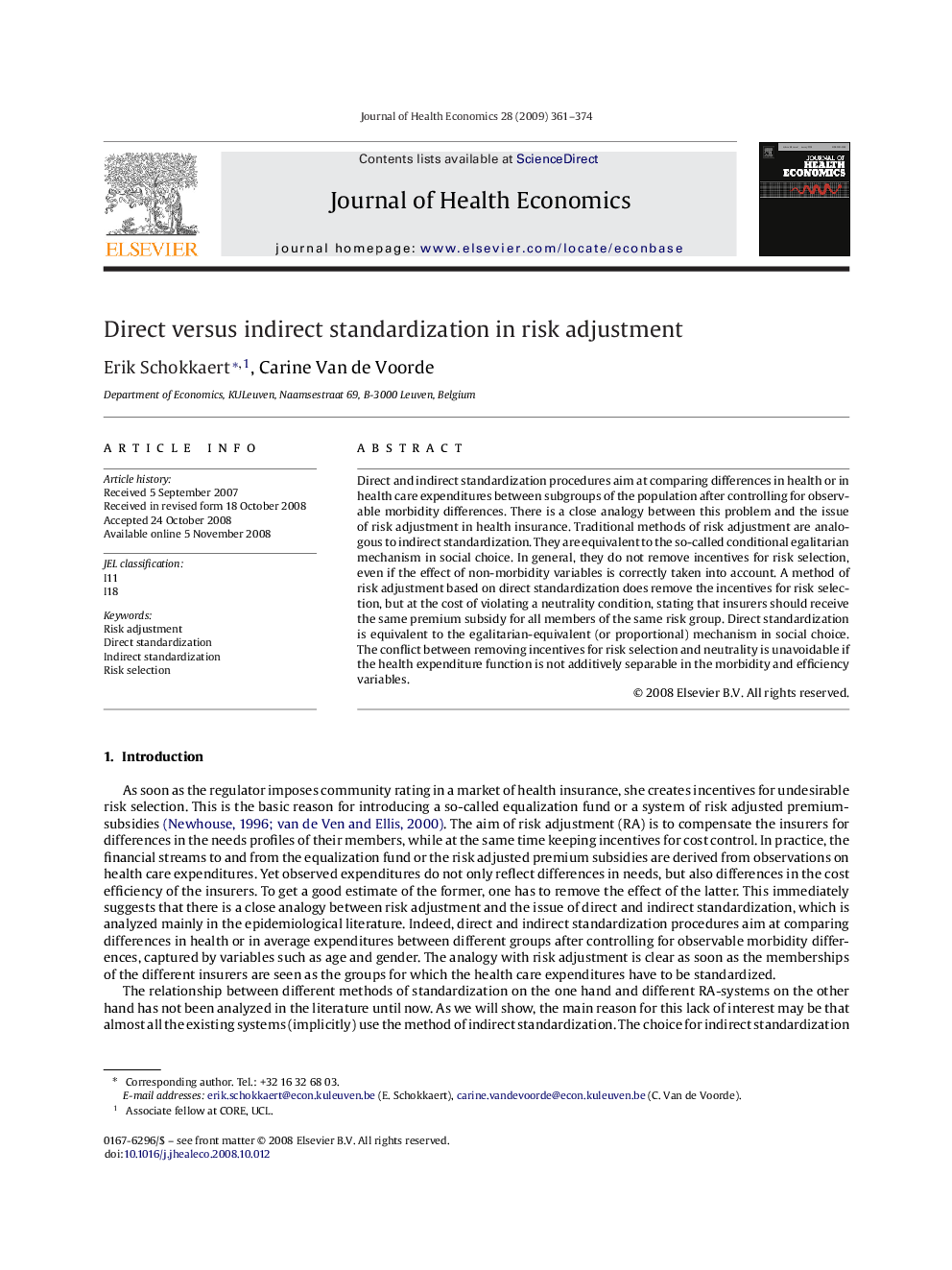| کد مقاله | کد نشریه | سال انتشار | مقاله انگلیسی | نسخه تمام متن |
|---|---|---|---|---|
| 961997 | 929979 | 2009 | 14 صفحه PDF | دانلود رایگان |
عنوان انگلیسی مقاله ISI
Direct versus indirect standardization in risk adjustment
دانلود مقاله + سفارش ترجمه
دانلود مقاله ISI انگلیسی
رایگان برای ایرانیان
موضوعات مرتبط
علوم پزشکی و سلامت
پزشکی و دندانپزشکی
سیاست های بهداشت و سلامت عمومی
پیش نمایش صفحه اول مقاله

چکیده انگلیسی
Direct and indirect standardization procedures aim at comparing differences in health or in health care expenditures between subgroups of the population after controlling for observable morbidity differences. There is a close analogy between this problem and the issue of risk adjustment in health insurance. Traditional methods of risk adjustment are analogous to indirect standardization. They are equivalent to the so-called conditional egalitarian mechanism in social choice. In general, they do not remove incentives for risk selection, even if the effect of non-morbidity variables is correctly taken into account. A method of risk adjustment based on direct standardization does remove the incentives for risk selection, but at the cost of violating a neutrality condition, stating that insurers should receive the same premium subsidy for all members of the same risk group. Direct standardization is equivalent to the egalitarian-equivalent (or proportional) mechanism in social choice. The conflict between removing incentives for risk selection and neutrality is unavoidable if the health expenditure function is not additively separable in the morbidity and efficiency variables.
ناشر
Database: Elsevier - ScienceDirect (ساینس دایرکت)
Journal: Journal of Health Economics - Volume 28, Issue 2, March 2009, Pages 361-374
Journal: Journal of Health Economics - Volume 28, Issue 2, March 2009, Pages 361-374
نویسندگان
Erik Schokkaert, Carine Van de Voorde,